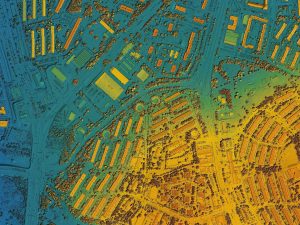SDH and DWDM Fundamentals

Course Overview
In this course, participants will gain an in-depth understanding of the principles and technologies behind Synchronous Digital Hierarchy (SDH) and Dense Wavelength Division Multiplexing (DWDM) systems. This course will cover the basic concepts and network architectures of SDH and DWDM networks, as well as the key elements required to build evolving transport networks. The course will also equip participants with a solid business and technical foundation in optical networks, services and applications development.
Target Audience
- Strategic or Technical Managers and Consultants
- IT/Telecom Professionals
- System Engineers
- Marketing and Sales Professional
- Other professionals who plan on using, evaluating, designing or working with SONET/SDH, DWDM and optical networks
Duration & Training Format
- Classroom: 5 days
- LIVE Virtual: 35 hours
- A minimum of 8 or more participants is required for a Classroom session to commence.
- A minimum of 6 or more participants is required for a LIVE Virtual session to commence.
- LIVE Virtual courses can be conducted for 5 hours or 7 hours daily. Please note that the number of training days will be extended if you opt for 5 hours daily.
Upcoming Course Dates
Course Objectives
At the end of this course, participants will be able to:
- Understand the basics of fiber optic communications
- Explain the SDH architecture and service, and its benefits in modern communication networks
- Understand the purpose and structure of SDH overhead, and its importance in ensuring network stability and efficiency
- Explain the concepts of SDH synchronization and timing, and how these are achieved in modern SDH networks
- Understand the different SDH network architectures, topologies, and configurations, and their applications in various network scenarios
- Apply span engineering principles to design efficient and reliable SDH network spans
- Understand the principles of managing SDH networks, including network monitoring, troubleshooting, and maintenance
- Understand the components and architectures of DWDM systems, and their role in modern communication networks
- Analyze the different types of DWDM architectures and their applications in various network scenarios
Course Outline
- Basics Concepts of Transmission and Network Evolution
- Basic Voice Signal
- Analog to Digital Conversion
- Sampling and Nyquist Principle
- Transmission Technologies
- Rise and Fall of SONET/SDH
- PDH Data Rates
- PDH Multiplexing
- SDH Advantages
- Rise of Data Traffic
- Decline of Circuit Switching and Rise of Packet Switching
- Optical Fibers
- Fibers Standard
- Fiber Optic Parameters
- Attenuation
- Chromatic Dispersion
- Polarization Mode Dispersion
- SDH Frame Structure
- Multiplexing Hierarchy
- SDH Topologies and Configuration
- From E1/F3/F4 to STM-1
- SDH Basic Rates: STM-1/4/16/64/256
- ITU Standards for SDH
- Protection Mechanisms
- Overhead Bytes
- SDH Synchronization and Timing
- Ethernet over SDH (EoSDH)
- IEEE 802.3 Standard
- Evolution of Ethernet
- 10/100/1000 Base-T, 100/1000 Base F
- VCAT and LCAS
- TDM to Packet Migrations
- MPLS-TP and Other Successors of SDH
- SDH Operations
- DWDM
- Benefits of DWDM
- CWDM vs DWDM
- Fiber Attenuation
- ITU Fiber Standards for WDM
- Dispersion Slopes of Different Fibers
- ITU Wavelength Grid
- DWDM Components
- EDFA Operations
- RAMAN Advantages
- Coherent DWDM
- Non-Linear Effects
- ROADM and its uses
- ROADM Features (Colorless, Directionless, Contentionless, FlexGrid)
Note: A Certificate of Completion will only be issued upon achieving at least 75% attendance for the course.
Pre-requisites
Participants should have a good understanding of communications principles.



